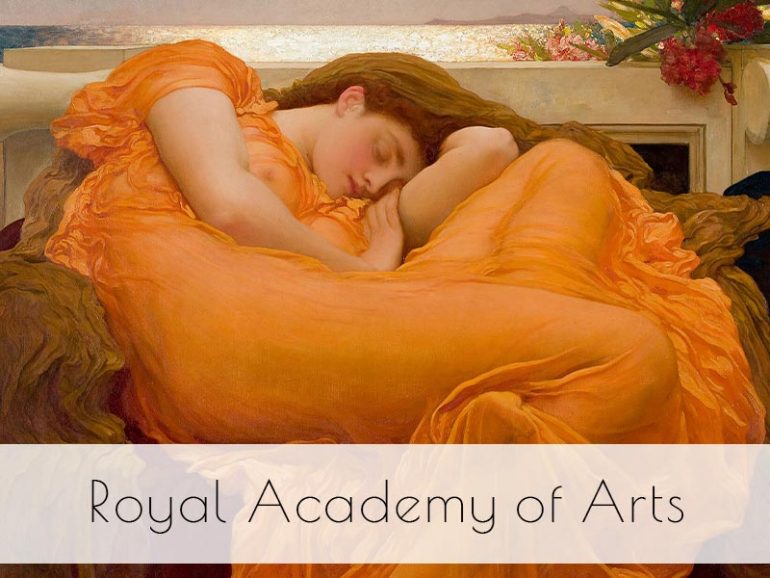Nestled in the heart of London, the Royal Academy of Arts was established in 1768. This prestigious institution was founded by a group of visionaries, including Sir Joshua Reynolds, with the aim of promoting the creation, appreciation, and understanding of art. Over the centuries, it has become a beacon for artists, scholars, and art enthusiasts alike, offering a diverse array of exhibitions, lectures, and educational programs.
Situated in Burlington House on Piccadilly, the Royal Academy of Arts serves as a hub for artistic innovation and cultural exchange. Its founding was spurred by a desire to provide a platform for artists to showcase their work, free from the constraints of traditional academic institutions. Here, artists are encouraged to push the boundaries of their craft, fostering a spirit of experimentation and creativity.
“Flaming June” by Frederic Leighton (1895):
If you head to the Royal Academy this year, you will see the most beautiful painting by Frederic Leighton, an eminent British artist and one of the foremost figures of the Victorian era. “Flaming June” is perhaps one of the most iconic paintings within the Royal Academy of Arts. Leighton created this masterpiece during the late 19th century, at a time when the British Empire was at its zenith and the arts were flourishing. The painting exudes a sense of timeless beauty and tranquillity, capturing the essence of a warm summer afternoon.
In “Flaming June,” a young woman is depicted reclining in a flowing orange gown against a backdrop of vibrant orange hues. She appears lost in peaceful slumber, her eyes closed and her body draped languidly across a stone bench. The delicate folds of her dress and the soft play of light and shadow imbue the scene with a sense of ethereal grace and serenity.
Leighton’s use of colour and composition imbues the painting with layers of symbolic meaning. The vibrant orange tones symbolize vitality, warmth, and passion, while the woman’s relaxed posture suggests a state of contentment and inner peace. The overall effect is one of harmony and balance, inviting viewers to bask in the beauty of the moment.
Despite its initial lukewarm reception, “Flaming June” has since become one of Leighton’s most celebrated works, admired for its technical mastery and emotional resonance. Today, it is considered a masterpiece of Victorian art and a testament to Leighton’s skill as a painter. Its presence in the Royal Academy of Arts serves as a reminder of the enduring power of art to captivate the imagination and stir the soul.
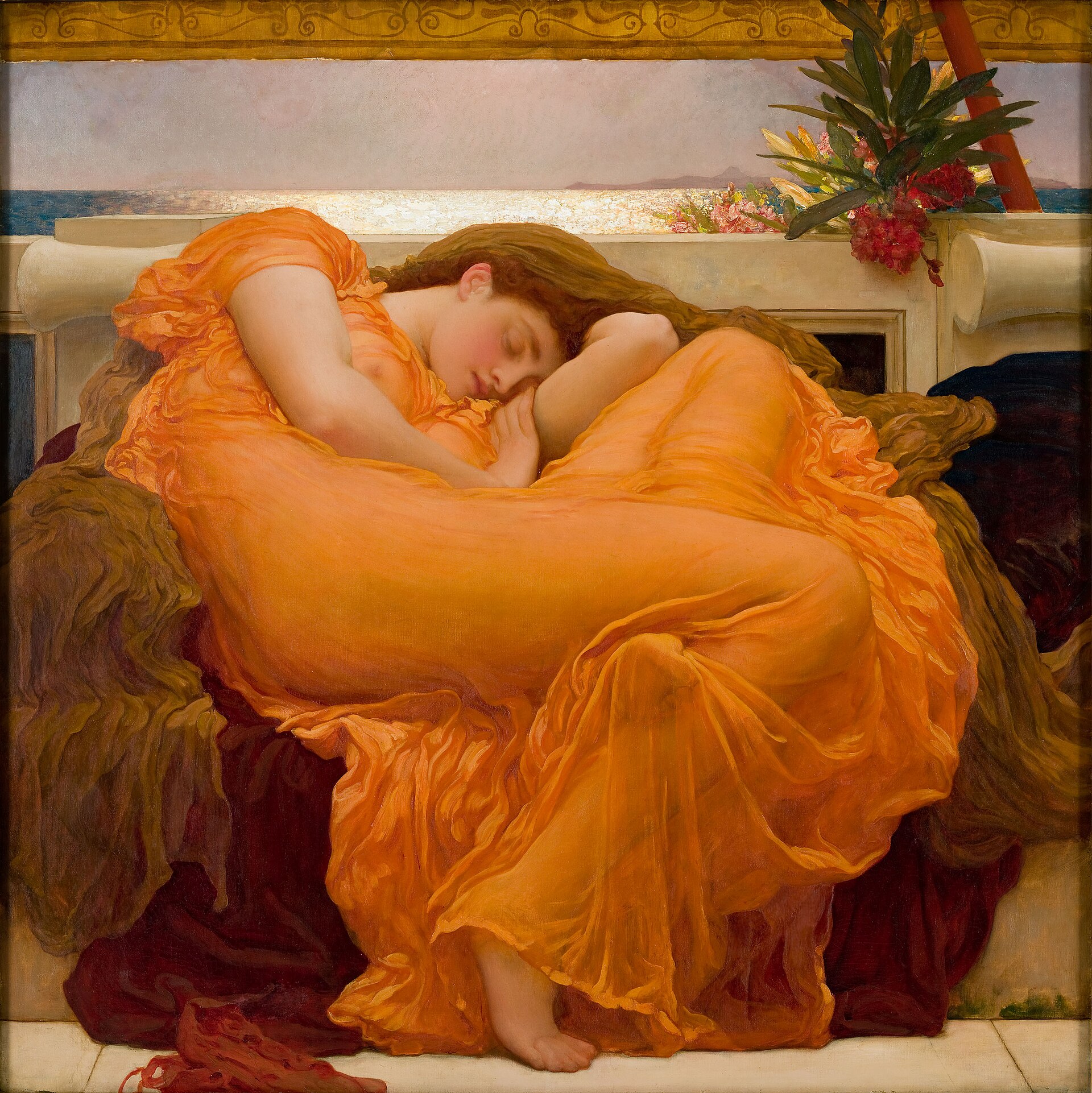
“The Hay Wain” by John Constable (1821):
John Constable, a prominent English landscape painter known for his romantic depictions of the countryside. “The Hay Wain” captures the serene beauty of rural England, reflecting Constable’s deep reverence for nature. Painted during the Romantic era, it celebrates the simplicity and timelessness of country life, invoking a sense of nostalgia and tranquillity.
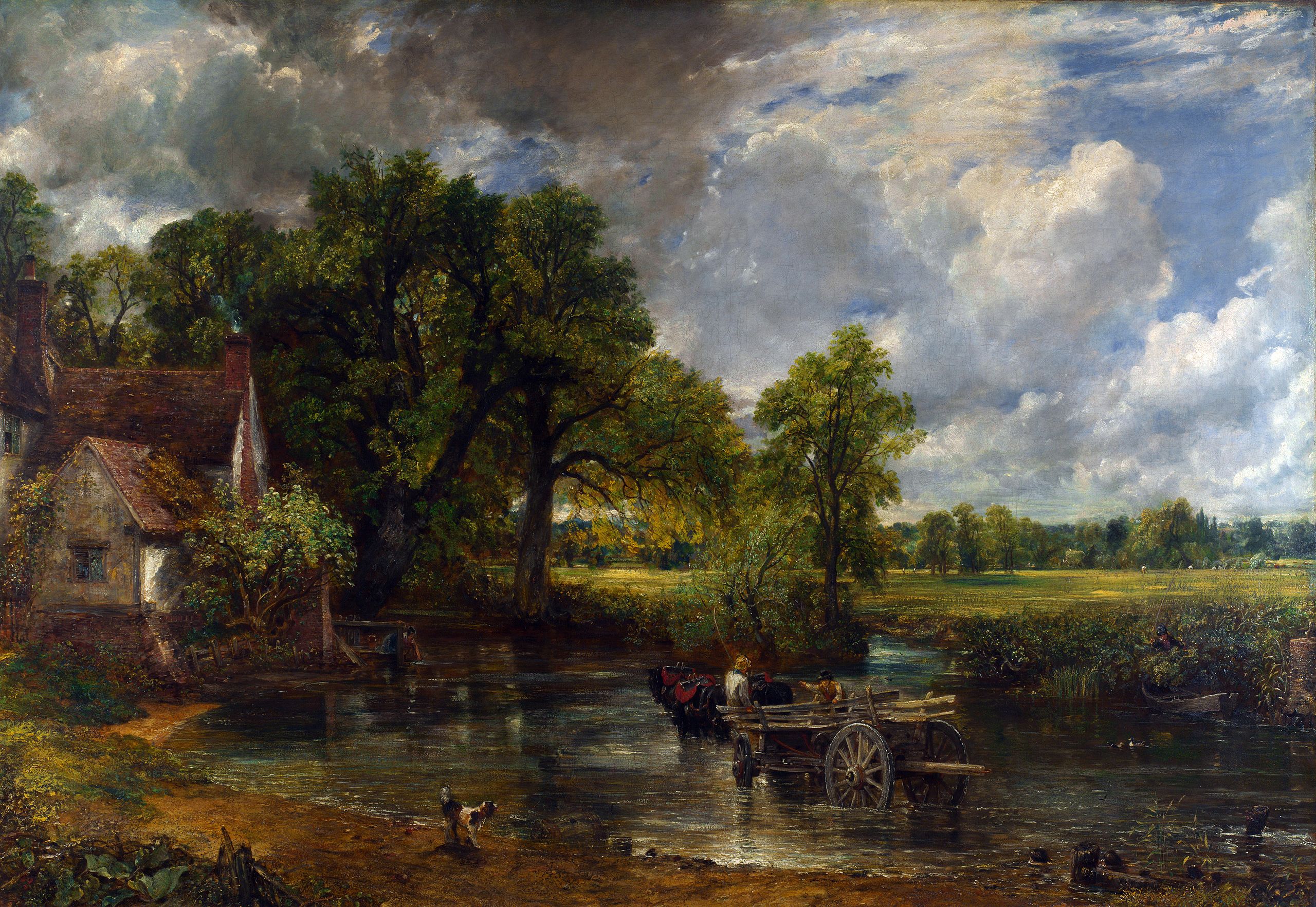
Ophelia” by Sir John Everett Millais (1851-1852):
Sir John Everett Millais, a leading figure of the Pre-Raphaelite Brotherhood, known for his meticulous attention to detail. “Ophelia” is a poignant portrayal of the tragic Shakespearean character from “Hamlet.” Millais’ depiction of Ophelia’s death by drowning is both haunting and ethereal, capturing the fleeting beauty and fragility of life. The painting exemplifies the Pre-Raphaelite commitment to realism and symbolism, drawing viewers into a world of myth and melancholy.
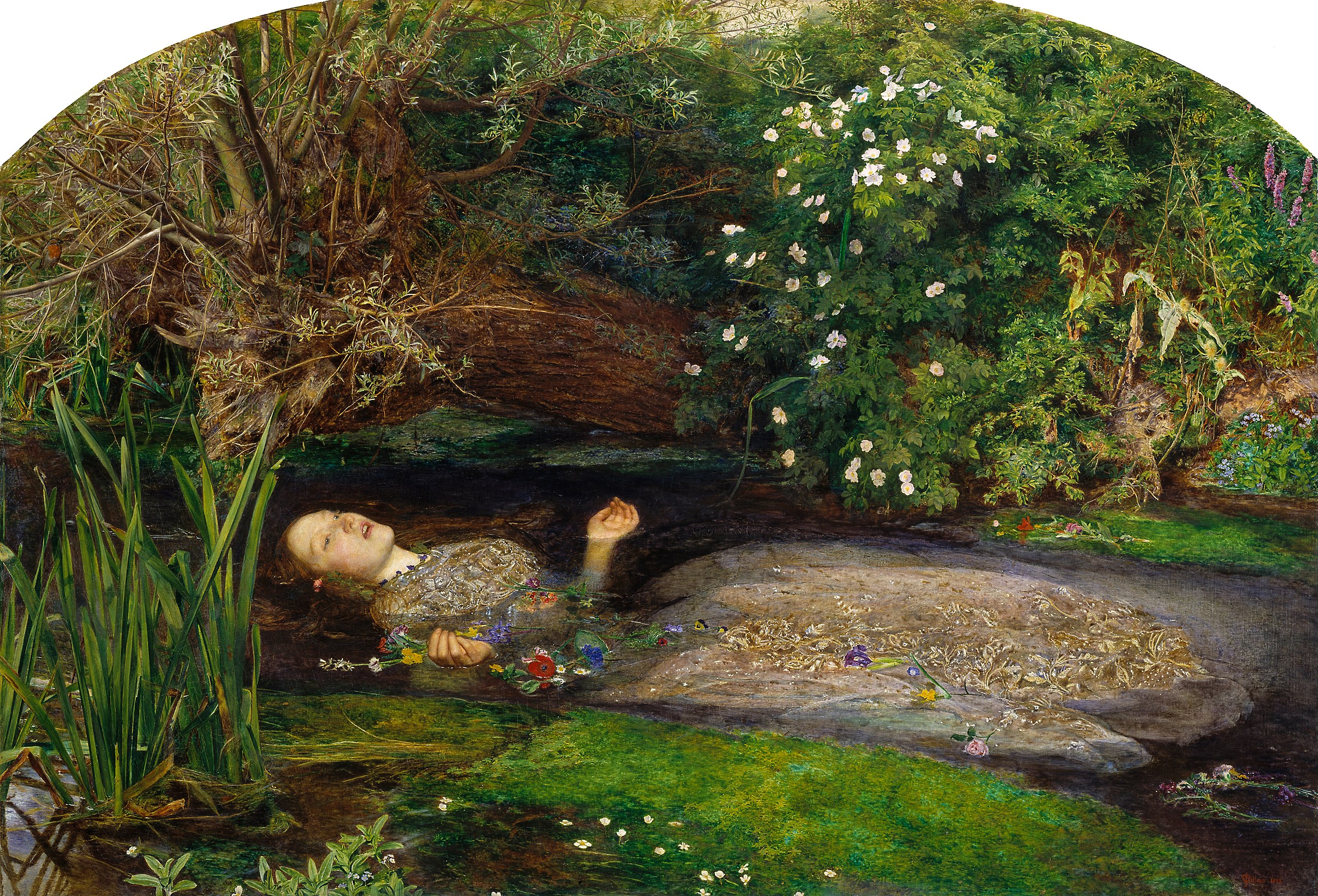
“The Fighting Temeraire” by J.M.W. Turner (1839):
J.M.W. Turner, a master of landscape painting and a key figure in the Romantic movement. “The Fighting Temeraire” is a powerful tribute to the end of an era, depicting the decommissioned warship Temeraire being towed to its final berth by a steam tug. Turner’s use of light and color creates a dramatic contrast between the fading glory of the old warship and the industrial progress symbolized by the steam-powered tugboat. The painting serves as a meditation on the passage of time and the inevitability of change.
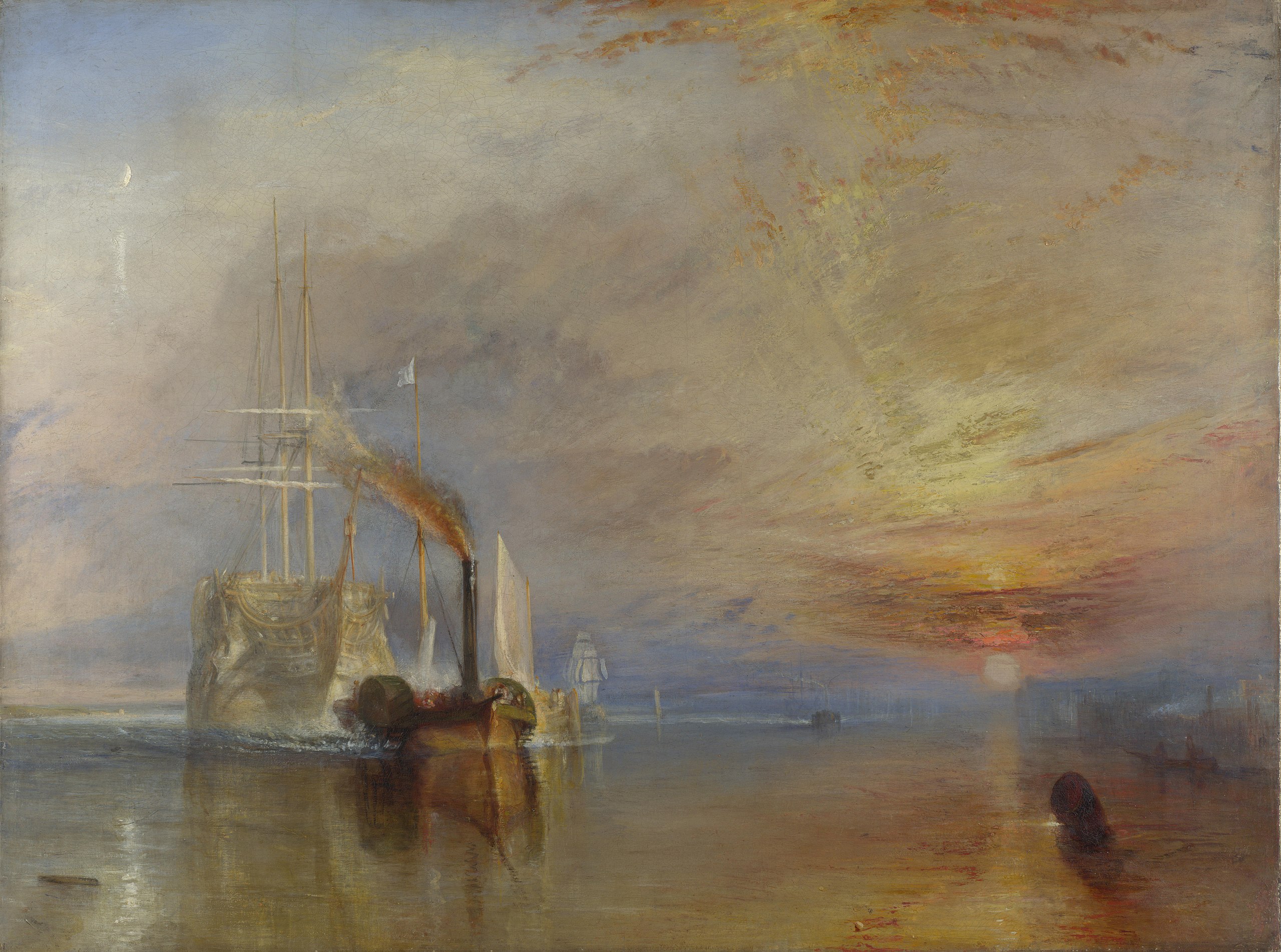
If any of our students visit the Royal Academy, we would love to hear about your visit. Why not document it for us and we can feature it here on our blog. Let us know what your favourite paintings were and what impressed you the most.
If you would like to receive a roundup of all of our blog posts once a week to keep you inspired in your inbox, why not sign up to our newsletter. You can access our sign up at the top of our page. If you are a London Art College student and you would like your artwork featured here, drop us a line at any time.

